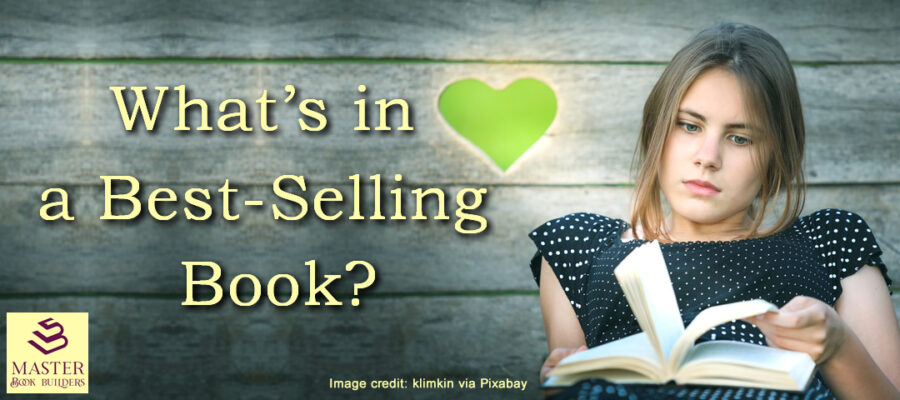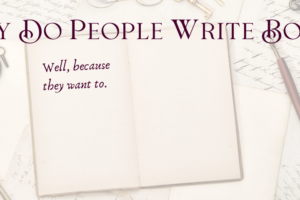What’s in a Best Selling Book?
The title of this post can (and should) be read from at least three angles:
- What makes a book appear on the various best-seller lists?
- What’s inside those books?
- What’s in it for authors whose books make it to best-seller status?
Pulling back the curtain on the NY Times, USA Today, and Amazon Best-Seller Lists
You’ll find a lot of opinions about the value and legitimacy of these lists. We’ll discuss some of them.
But here’s the simple truth:
ALL of them can be gamed (and regularly are).
Let’s start with the New York Times list. Two major criticisms jump out. One is that the black-box selection system is not based solely on sales, but is “gamed” from the inside by a committee of folks who seem to favor books written by NYT-affiliated authors. I don’t have the connections to verify this one, but this writer explains why he believes it.
The bigger problem arises when you learn that authors with enough money to spend can buy their way onto the list. A Forbes exposé from 2014 examined one firm that will organize a campaign they guarantee will get your book to NYT best-seller status. If the author can afford to buy the books, which Forbes said can run up to $250,000. Although the article noted that the firm at that time had scrubbed its website, the Daily Kos reported in 2021 that it was still going strong, naming specific authors and titles they called “fake best sellers.” These campaigns involve the author funding the purchase of thousands, tens of thousands, and even larger quantities of books.
And you don’t need to hire a firm to do this, if your book is business-related and you happen to have contacts at large corporations you can convince to buy 100,000 or 200,000 copies, as Neil Patel explained in a recent interview on LinkedIn.
For the USA Today list, a 2020 Forbes article outlines two ways to make that list. The first is to get 6,000 copies of your book to sell in a single week (selling 100,000 copies spread evenly over a year won’t cut it). If you run a campaign like the NYT ones we just discussed, but on a bit smaller scale, you should take care of this route.
The second is to join in on one of those multi-author book projects you’ve probably seen, where a large group of authors write a section or chapter each and they all market it to their email lists and social media followers in a coordinated campaign. The article writer explains how she did it with 23 co-authors — all of whom can forever more be introduced as USA Today best-selling authors.
[Note: you may notice that the Wall Street Journal is not mentioned, but that’s because last month they announced they were discontinuing their lists, according to Publishers Weekly.]
Amazon’s Best-Seller lists are a completely different animal. While some attempt to discount their importance, in many ways they are more honest and accurate. And they are certainly more accessible to independent authors.
One criticism notes that Amazon updates its sales ranking data as often as hourly. This enables a book to hit #1 for as little as an hour and disappear from the list very quickly after that moment of fame. By picking categories with less competition, it’s fairly easy to accomplish that feat, even without worrying too much about the quality of the book’s content.
But what about a book that stays at #1 for several days, in several categories? And then stays on the Amazon Best Seller pages in the top 10, or top 50, for several weeks? How about achieving those results across several of Amazon’s country-specific marketplaces?
What about seeing your book ahead of Malcolm Gladwell, or Seth Godin, in the same category, as our client, Michael Coleman, recently did?

And how about seeing thoughtful, enthusiastic, 5-star Amazon reviews, from “Verified Purchaser” readers who are not blood relations or close friends?
This, too, is doable for the Indie Author, and without the six-figure budget. But it takes much more planning and effort than hitting #1 for an hour.
And that brings us to the second aspect of the title of this post: What’s IN a Best-Selling Book?
In the End, It’s What’s Inside that Counts
Becoming a “best-selling” author is not — or should not be — the end goal of writing and publishing a book. We’re going to assume that delivering value to your readers, useful information, inspiration, entertainment, or all of these, is a big part of why you decided to write your book.
We’re also going to assume that you invested the time and money needed to thoroughly research and write your book and have it professionally edited and designed. Because that’s what it will take to achieve that #1 and ongoing best-seller ranking for more than a fleeting hour — and receive those rave reviews.
If it’s nonfiction, you’ve addressed a problem that impacts your target audience in their work or daily lives, used true or true-to-life stories and examples to illustrate, and delivered a solution they can put to use today. For a novel, you’ve created complex characters with both strengths and flaws, imposed a problem they never wanted to face, set it all up in a rich sequence of familiar and surprising events, and brought it all to a satisfying conclusion. In either case, you’ve added some humor to lighten the mood.
It’s a book your readers will be changed by and want others to experience.
Which now brings us to the relationship between what’s inside your book and what’s really “in it” for you.
The Ultimate Value of Your Book
For most independent authors, the reward for all that effort to write and publish their first book and the added investment to achieve best-seller status will not be money from sales of the book. I say “first book” to focus on the variety of paths that can open up to an author once they’ve published.
For a novelist, the immediate reward is likely the freedom to write their next book. The validation that comes with gaining best-seller status and seeing those reviews can carry you through periods of doubt and fear. Whatever small stream of royalties there may be from the first book can help, too.
Your status will become part of your pre-marketing for the next book and may open doors previously slammed shut, with agents, screenwriters, and publishers, should you wish to pursue those. You may also want to explore opportunities to teach or coach other aspiring authors and your status will add to your credentials and authority in those areas.
Mention of teaching and coaching opportunities crosses over into the benefits to nonfiction authors, who in many cases have envisioned these kinds of goals from the moment they first thought seriously about writing a book. Here’s a quick list of just a few of the possibilities a best-selling book may open to you:
- Paid speaking gigs (event planners love published authors and best-seller is icing on the cake!)
- Marketing sauce for your existing business (press release, blog post, a fancy badge on your about page, book sales page, etc., etc., etc.)
- Client gifts (onboarding, thank you)
- Podcasting (getting you invited as a guest, or start your own and attract paid sponsors)
- In-person Workshops (an upsell part of the paid speaking path)
- Online webinars and courses (teaching and expanding on what you wrote)
- Grow the book into a business . . .
That last one might seem over the top, but we know people who’ve done it. Our most recent example is Brian Gregory, author of Sheep Don’t Eat Complicated Grass, which delved into:
“the secrets of emotional marketing and advertising, why people buy and why not. It identifies the 15 emotional archetypes that have sold every product on the planet – and always will.”
from Brian’s LinkedIn profile
He’s told us that in writing the book, he clarified his thinking about those archetypes and their impact on marketing communication and that led directly to the founding of Admanity. Go see how the book’s ideas are being implemented in the Admanity Protocol, and take the YES!Test. (Full disclosure, we are clients of Admanity; but this is not a paid affiliate link.)
So the next time you see or hear someone belittling the accomplishment of best-seller status — just smile knowingly and keep to yourself how much you’ve now learned about what’s in it!






Leave a Reply